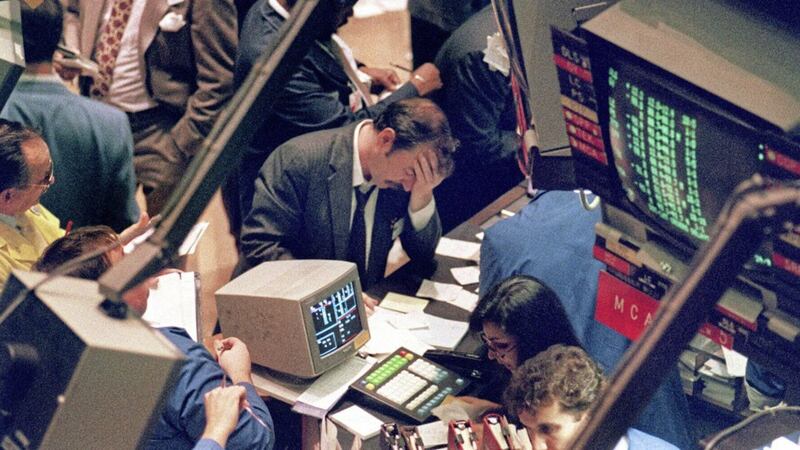IT'S 33 years ago that one of the most notorious days in stock market history took place - "Black Monday", October 19 1987.
For those of us who were there, it will forever be associated with the hurricane that hit the south of England on the Thursday before, which caused chaos on the Friday in London.
In the US the Dow Jones Industrial Average plunged 22 per cent in one day and the FTSE 100 lost 23 per cent in two days. At the time interest rates were around 8 per cent, the rate of inflation was 4.17 per cent and as a result of the fall the FTSE 100 stood at 1713. Today the Bank of England base rate is 0.1 per cent, inflation in July stood at 0.5 per cent and the FTSE 100 stands at a little under 6000.
There are massive challenges to be faced today. Brexit has been rumbling on for over four years (the UK voted to leave in June 2016) but no one could have predicted the catastrophic pandemic that is still causing a huge number of fatalities and massive economic disruption.
As the government struggles to get to grips with the impossible balancing act of safety and the impact in economic terms, there has been some speculation that we may yet see negative interest rates.
This is not an unknown phenomenon: Japan, Sweden, Switzerland and the European Central Bank have all trodden this path. Last week UK banks received a letter asking how ready they would be if the Bank of England base rate moved into negative territory. It is not a certainty: indications are that such a move will be considered over the next three months.
This step would be moving into the unknown. Banks would have to pay the Central Bank to deposit money, thus in theory encouraging them to lend more. The aim to get the economy moving by stimulating loans and mortgages is a laudable one, but the outcome is not guaranteed: it can mean that savers withdraw funds and therefore liquidity and the ability to lend declines. The exact opposite of what is intended.
Negative interest rates are generally held to be bad for banks, which make money by charging interest on loans and are typically hurt by lower rates. This could of course be exacerbated in the current pandemic as customers (both business and individual) struggle with repayments, possibly leading to higher losses.
Although such a move is far from certain, and so far, quantitative easing has been the tool of choice, it is worth briefly considering the impact on the stock market. In broad terms, it would mainly be positive. Clearly savers would prefer to receive some income on their savings, which would favour equities, but there is the increased level of risk (volatility) to consider.
The bond market would also benefit in terms of prices rising, but lower yields decrease future income flows. Of course, such a scenario is far from certain, but we are living in such strange times, that it is possible that we could yet see negative interest rates.
Cathy Dixon is a partner at the Belfast office of Smith & Williamson Investment Management. This article does not constitute a recommendation to buy or sell investments and the value of any shares may fall as well as rise.







